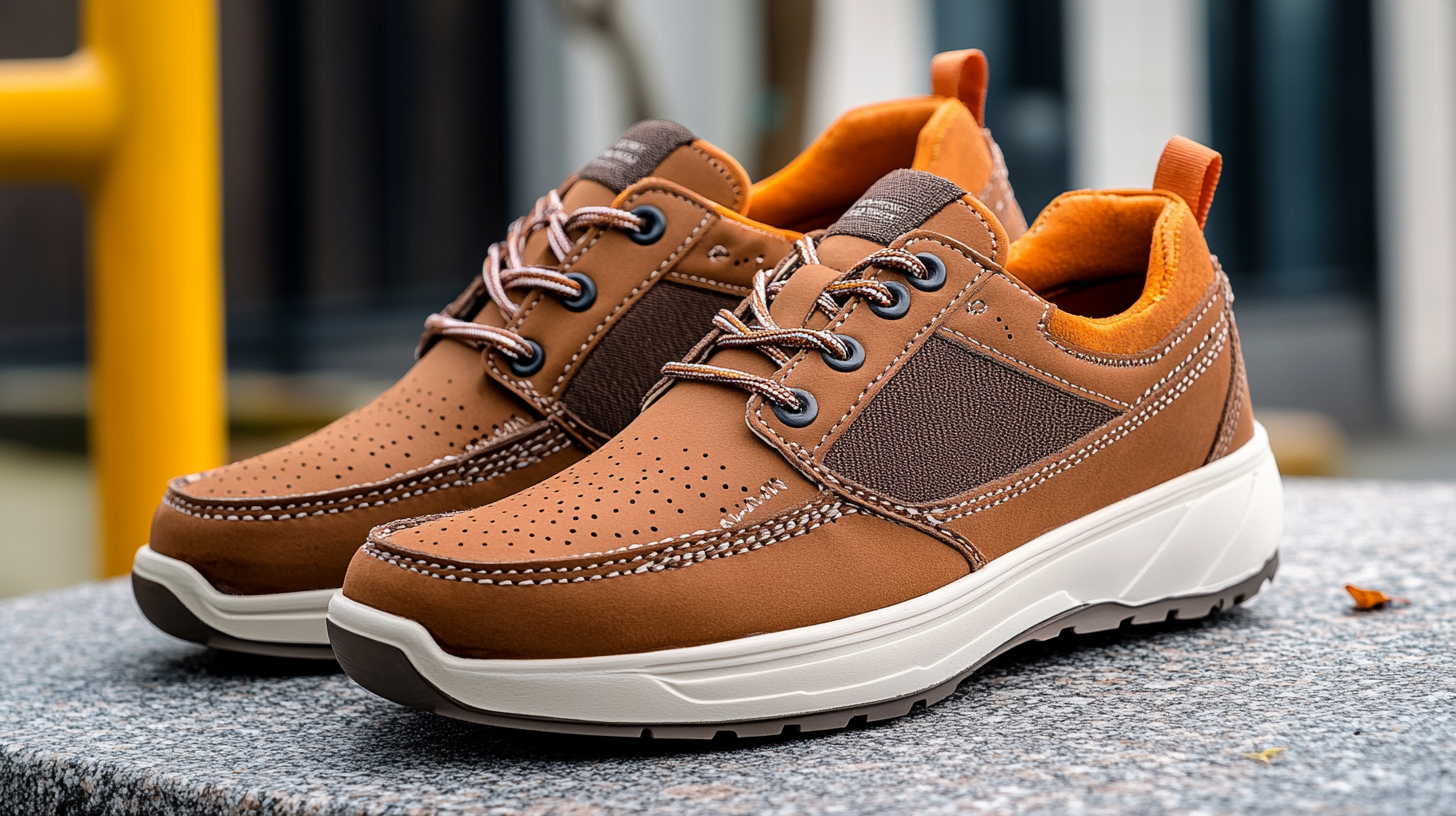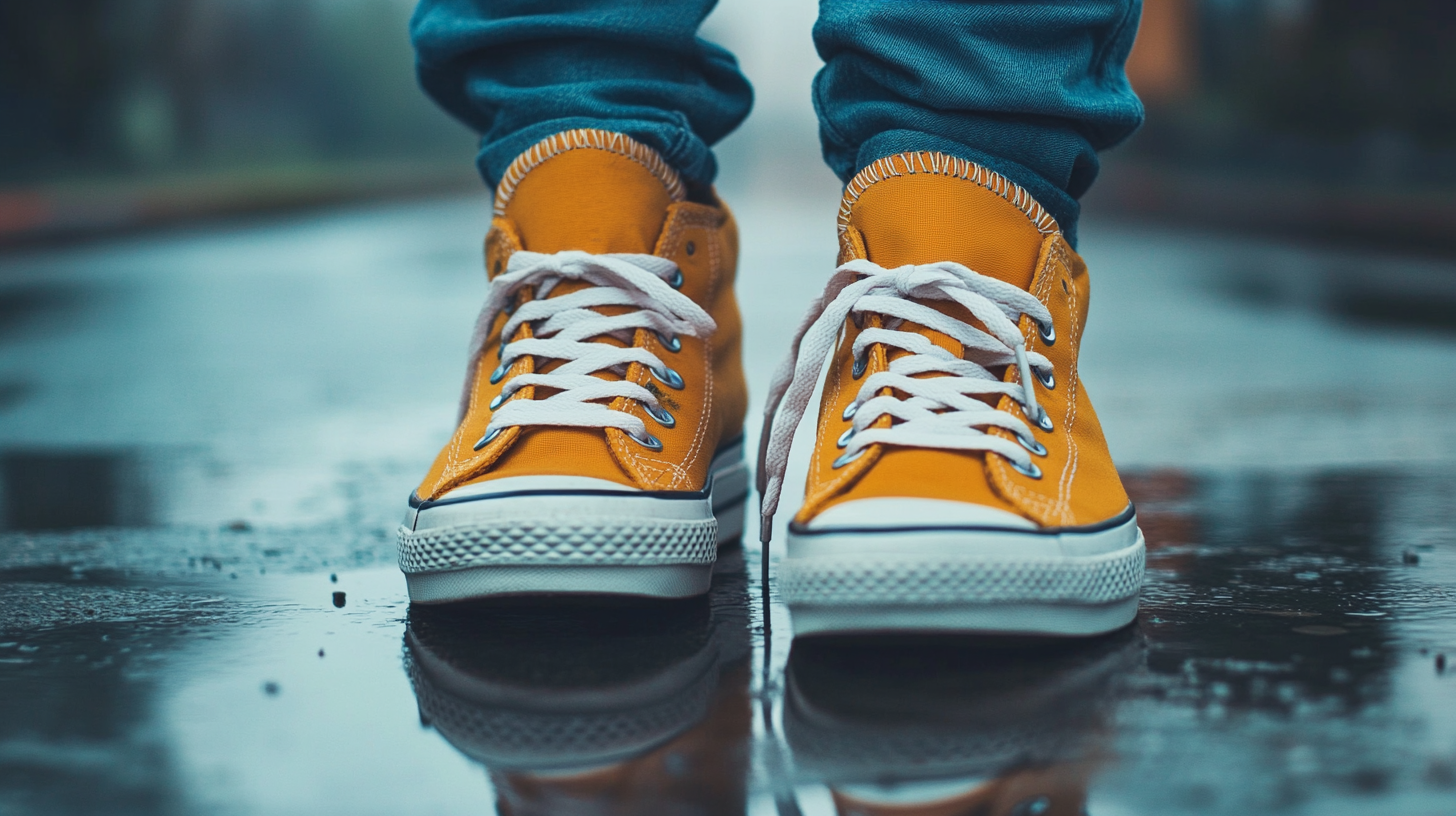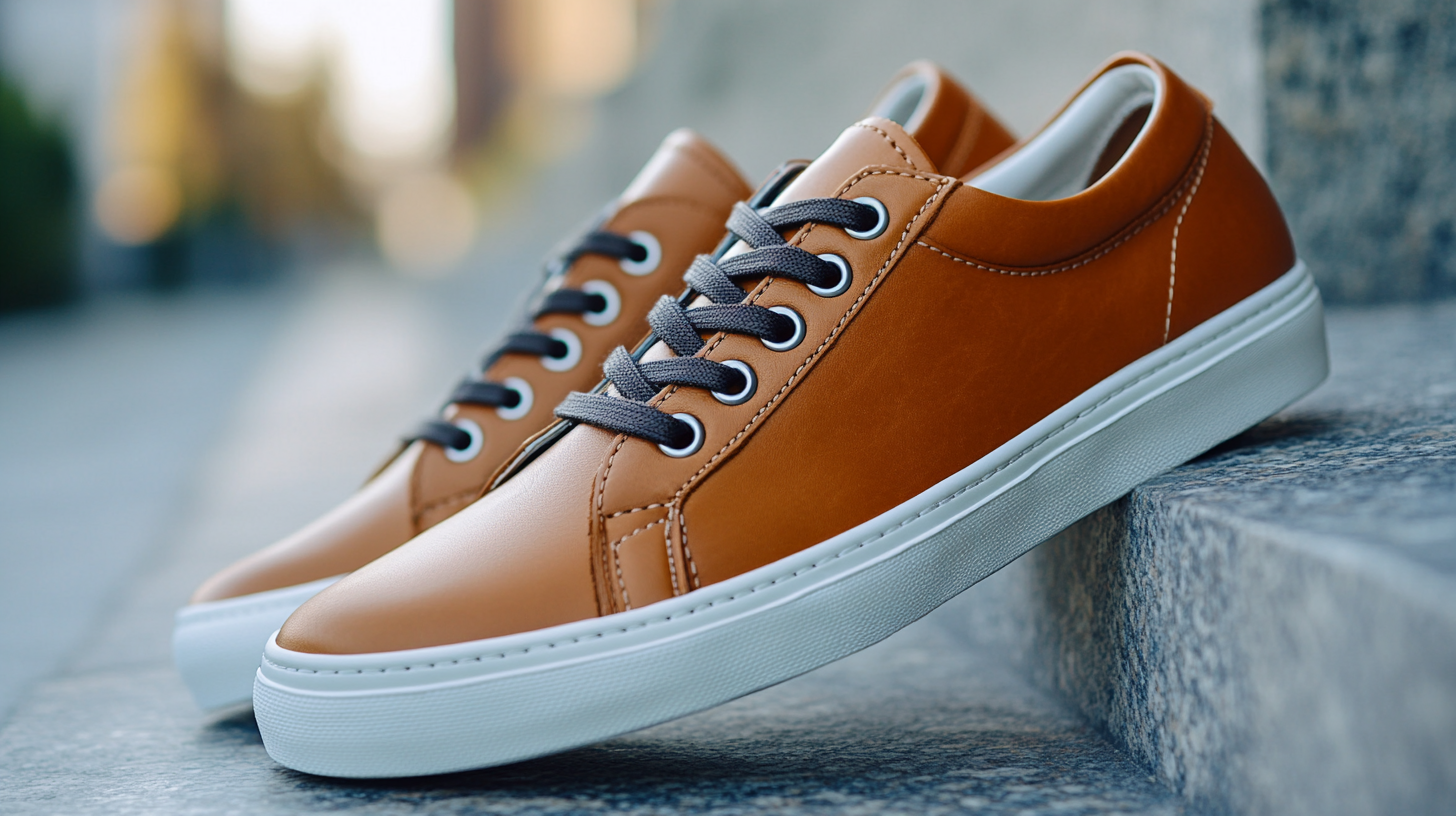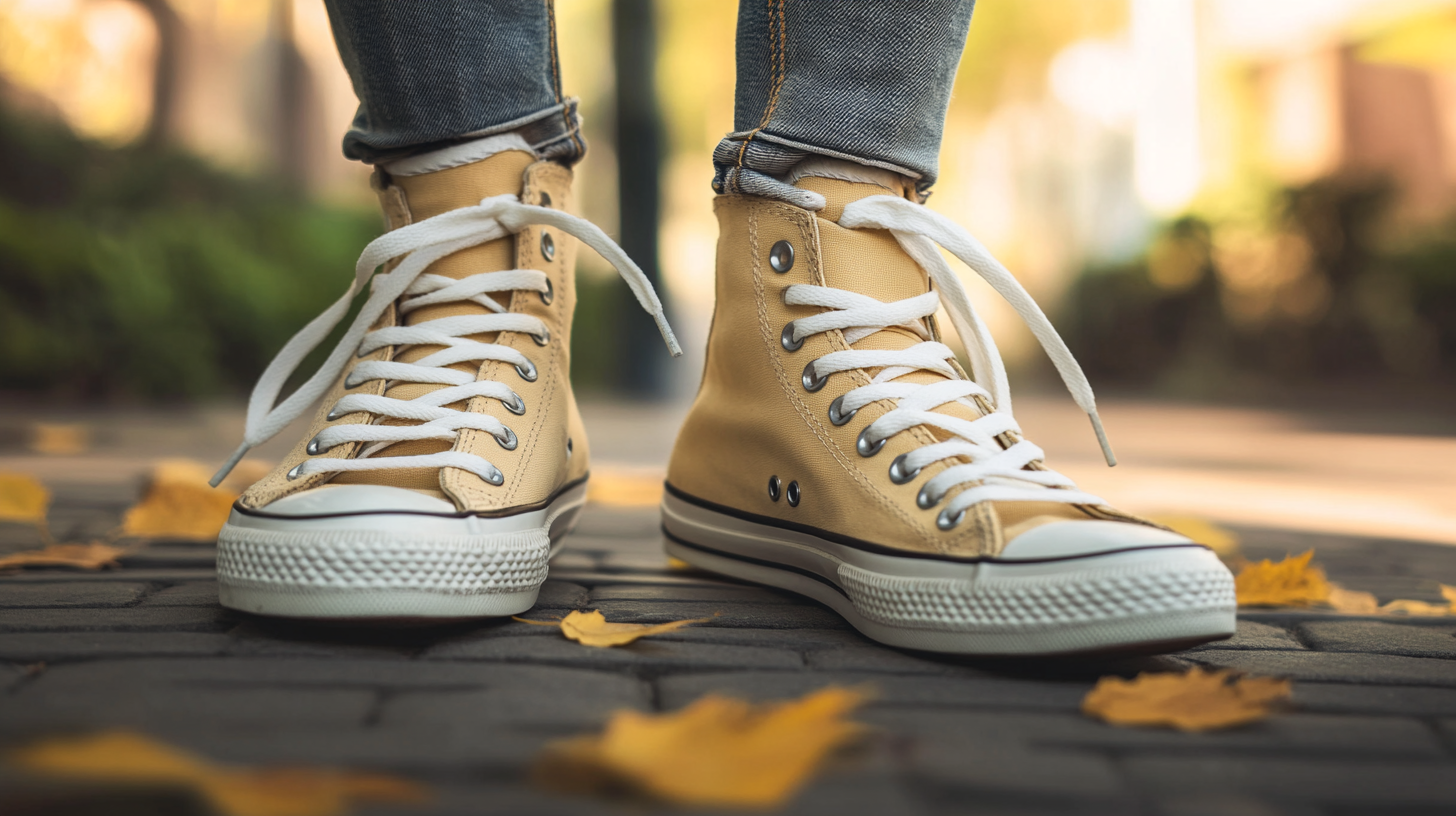
The global casual shoes market is poised for significant growth, with projections suggesting a compound annual growth rate (CAGR) of over 5% from 2020 to 2025. This strong expansion is primarily driven by shifting consumer preferences towards comfort and versatility in footwear, as more individuals prioritize casual styles for both leisure and professional environments. According to a recent report by Grand View Research, the market was valued at approximately USD 55 billion in 2020, and it is expected to reach an impressive USD 79 billion by 2025. This shift not only highlights the increasing importance of casual shoes in everyday fashion but also reflects broader lifestyle changes influenced by a growing emphasis on wellness and informal dressing.
In addition to these overall trends, numerous key players are emerging as leaders in this dynamic market, innovating with sustainable materials and enhanced design features to meet evolving consumer expectations. Brands like Nike, Adidas, and Puma are not only dominating market share but are also redefining the casual footwear landscape with unique collaborations and technology-driven designs. As consumers become more environmentally conscious, the demand for eco-friendly casual shoes is also on the rise, making sustainability a vital consideration for brands looking to capture market attention in the coming years. Through an in-depth analysis of these trends and leading brands, this blog aims to provide valuable insights into the current state and future direction of the global casual shoes market.

The global casual shoes market is poised for significant growth, with projections indicating a remarkable increase in size by 2025. According to a recent market research report, the market is expected to reach approximately $70 billion, driven by changing consumer preferences and an increasing focus on comfort and style in daily footwear. This growth trajectory highlights a shift in consumer behavior, with a growing demand for versatile shoes that cater to both casual and semi-formal occasions. Key trends shaping the casual shoes market include the rise of athleisure, which combines athletic and leisurewear, and the growing popularity of eco-friendly materials. The modern consumer is increasingly conscious of sustainability, prompting brands to innovate with recycled materials and sustainable production processes. A study indicated that around 60% of consumers are more likely to purchase footwear from brands that prioritize environmental responsibility, strongly influencing market dynamics. Leading brands such as Nike, Adidas, and Vans are at the forefront of this market evolution, continuously adapting their product lines to meet consumer demands. In addition, smaller, niche brands focused on specific segments, such as sustainable casual footwear, are gaining traction. The competitive landscape is characterized by a blend of established players and innovative startups, contributing to a dynamic market environment. As we approach 2025, understanding these growth projections and key trends will be essential for stakeholders in the casual shoe industry.

The global casual shoes market is witnessing an unprecedented surge, driven by a combination of lifestyle changes and evolving consumer preferences. One of the primary factors propelling the demand for casual footwear is the growing emphasis on comfort over style in everyday wear. As more people transition to remote working and seek versatile options that carry them from home to social outings, casual shoes have stepped into the limelight. This shift highlights the need for footwear that offers both utility and aesthetic appeal, catering to the modern consumer's desire for practicality without sacrificing fashion.
Another significant factor is the increased awareness of health and wellness among consumers. As individuals become more focused on maintaining an active lifestyle, comfortable footwear becomes essential. Brands are responding to this trend by incorporating ergonomic designs and innovative materials that enhance comfort and support. Additionally, the rise of athleisure—a fashion trend that blends athletic and leisurewear—further boosts the appeal of casual shoes, as they seamlessly fit into both workout routines and everyday fashion.
Furthermore, the influence of social media and celebrity endorsements cannot be understated. Platforms like Instagram and TikTok have revolutionized the way consumers discover and connect with brands. Casual footwear brands that effectively leverage these platforms not only reach a broader audience but also engage with communities through lifestyle promotion and influencer partnerships. This trend plays a crucial role in shaping consumer perceptions and driving the demand for stylish yet comfortable footwear options that resonate with today’s youth.

The casual shoes market is poised for dynamic growth, driven by evolving consumer preferences and lifestyle changes. Leading brands are strategically positioning themselves to capture a significant share of this burgeoning sector. According to a recent report by Grand View Research, the global casual shoes market is expected to reach approximately $100 billion by 2025, reflecting a compound annual growth rate (CAGR) of 5.5% from 2023 to 2025. This growth is largely attributed to an increasing focus on comfort and functionality, with consumers increasingly turning to casual footwear for both everyday activities and leisure pursuits.
In the competitive landscape, brands like Nike, Adidas, and Puma continue to dominate, leveraging their strong brand identities and extensive product lines. Recent data from Statista highlights that Nike holds a remarkable 26.2% market share in the athletic footwear sector, which significantly overlaps with casual shoe preferences. Furthermore, emerging brands such as Allbirds and Cariuma are quickly gaining traction by appealing to environmentally conscious consumers, a trend underscored by a 2022 report from Market Research Future which indicates that sustainability is becoming a crucial purchasing factor for 73% of buyers.
As consumers prioritize versatility, brands are increasingly innovating to blend style with functionality. The expansion of e-commerce platforms is also reshaping the competitive landscape, allowing both established and emerging brands to reach wider audiences. With digital marketing strategies becoming more sophisticated, companies are optimizing their online presence to engage potential buyers effectively, underscoring the need for continuous adaptation in this fast-paced market.

The global casual shoes market is undergoing a transformative shift, driven by emerging trends in material innovation that are reshaping footwear design. As brands strive to meet consumers' demand for both style and sustainability, innovative materials are taking center stage. This evolution is not merely about aesthetics; it's also a response to the growing environmental concerns surrounding the fashion industry.
One significant trend is the rise of eco-friendly materials such as recycled plastics, organic cotton, and bio-based polymers. Brands are developing shoes that incorporate these sustainable resources, appealing to environmentally conscious consumers. For instance, the introduction of algae-based foams and plant-derived materials not only reduces waste but also minimizes the carbon footprint associated with traditional footwear production. These advancements offer a unique selling proposition, attracting a more discerning customer base.
Moreover, technology is playing a crucial role in enhancing the performance and comfort of casual shoes. Innovations like 3D printing and knit technology allow for customized fits and designs, catering to individual preferences. This shift toward personalized footwear not only enhances user experience but also promotes longevity, as consumers are more likely to invest in products that cater to their specific needs. As we approach 2025, the intersection of material innovation and user-centric design will be pivotal in defining the future landscape of casual footwear.
The global casual shoes market is witnessing significant transformation driven by evolving consumer preferences and buying behavior, particularly as we approach 2025. According to a recent report by Grand View Research, the global casual footwear market is projected to reach USD 211.5 billion by 2025, growing at a compound annual growth rate (CAGR) of 6.4%. This growth is fueled by an increasing demand for comfortable yet stylish footwear, especially among millennials and Gen Z consumers who prioritize both aesthetics and functionality in their purchases.
One notable trend shaping this market is the rising popularity of sustainable fashion. A survey from the Global Fashion Agenda indicates that 57% of consumers are willing to change their purchasing habits to reduce environmental impact. This shift is prompting leading brands to incorporate eco-friendly materials and ethical production practices into their casual shoe lines. Brands like Allbirds and Nike have made significant strides by promoting their sustainable initiatives, appealing to a generation that values corporate responsibility alongside style.
Furthermore, the online shopping experience has dramatically altered buying behavior. The rise of e-commerce platforms, particularly during the pandemic, has led to an increase in direct-to-consumer sales. Statista reported that online shoe sales accounted for over 30% of total footwear revenue in 2021, highlighting a major shift in how consumers engage with brands. With social media marketing and influencer collaborations becoming essential components of brand strategy, companies are increasingly leveraging these channels to connect with their target audiences and foster brand loyalty. As we move towards 2025, understanding these key trends and consumer preferences will be crucial for brands aiming to stay competitive in the casual shoe market.
